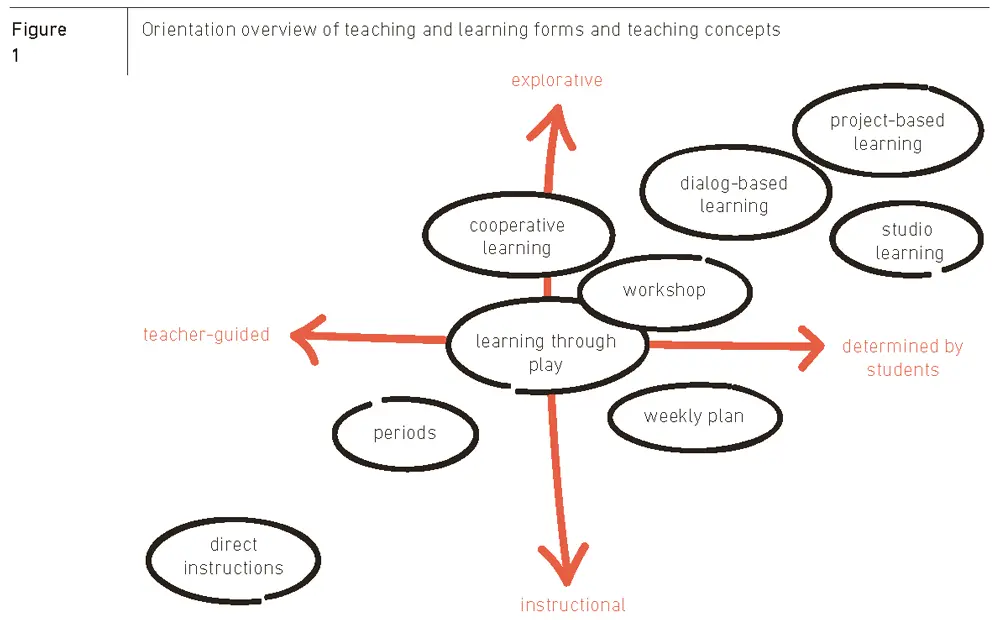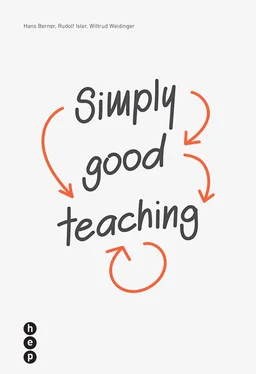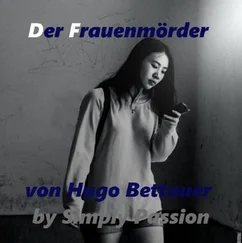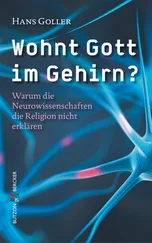The actual heart of the book is comprised of chapters 2 to 7 and includes both “classics” like the project method, as well as concepts, such as “learning through dialogs”, which are perhaps less well known in German-speaking classroom research. Unjustly, for sure, as this approach has its venerable roots in philosophy (Socrates) and is prominently present as well in Anglo-American educational research, e.g., in form of a chapter on “Theory and Research on Teaching as Dialogue” in the renowned Handbook of Research on Teaching (2001).
The book concludes with three chapters on lesson planning, learning-conducive assessment, and reflection about teaching. The demand for fair and learning-conducive performance assessment is timeless, however; it is favored and given a decidedly stronger prominence in today’s competence-oriented instruction which is practiced everywhere (not just in Switzerland’s Curriculum 21). This is particularly true for the careful observation of learning behavior and the furthering of one’s ability for realistic self-assessment. The latter is a fundamental requirement for successful student-directed individualization, where students must select assignments with appropriate difficulty levels.
It is a strategically good decision to study the topic “reflection” in the concluding chapter which, together with chapter 1 (Fundamental principles of instructional quality), constitutes the two supporting pillars. Firstly , collegial feedback (e.g. by way of classroom visits or video-based) about one’s own teaching, the comparison of divergent perspectives of the same subject matter, and the cooperative reflection based on it are an ideal opportunity to become aware of one’s own blind spots, to open rigid, subjective theories, to explain implicit theories, and to recognize subconscious automatisms as well as quirks. This self-awareness is an indispensable prerequisite for the further development of one’s own teaching, which does not just scratch the surface. Secondly , the collegial exchanges about teaching have a salubrious effect as well, as shown by research about teacher cooperation and teachers’ health. The common reflection on shared difficulties, the experience that other professionals are only human after all, can prevent exhaustion and burnout. As referenced by one of the key statements of the Potsdam teacher study: “The most important disburdening condition is experiencing social support by colleagues and through the school administration” (Schaarschmidt 2013).
Moreover, of equal importance is student feedback, because: “It does not matter so much whether teachers are excellent or rated as excellent by their peers; what matters is whether they are deemed excellent by their students. It is the learners who sit in their classes and recognize if their teachers view learning through their eyes and whether it promotes the quality of their relationship. Learning must be viewed by the teacher from the perspective of the learners, so that they better understand what learning looks like from the point of view of the learners and how they experience it” (Hattie, 2013).
In our view, it would be ideal if the practical application of what is described in the book would follow the principle of an evidence-based lesson development. This would involve four steps: (1) Initial assessment (e.g. collegial feedback, student surveys), (2) evidence-based reflection, (3) specific measures for lesson development and professionalization, e.g. lesson study, microteaching or other means of professionalization such as repeated readings of selected book chapters based on new experiences, and (4) an evaluation on the basis of a repeated survey: Have the lessons indeed changed? Who has benefitted from it? Was there a healthy relationship between expended efforts and results?
With this in mind, we wish the readers of this book an enlightening reading experience as well as a high level of effectiveness with the practical implementation in the classroom.
“Successful teaching can be
accomplished in many
different ways, but not just
in any old way.”
Franz E. Weinert (1930–2001), Andreas Helmke (1945*)
INTRODUCTION
Simply good teaching ? It seems indeed very simple when the lessons are taught well. However, as those with extensive experience of teaching and learning know all too well, it is precisely the kind of teaching that occurs in a pleasant and non-threatening atmosphere and in which significant ideas are imparted and learned, and presented in a clear and comprehensible manner, which is in fact an expression and synergy of manifold didactic-methodological and social competences. Although teaching well appears at first glance to be mostly a question of perspective, Andreas Helmke, in his publications, provides documented evidence of indisputable quality characteristics of teaching and justifiable characteristics of instructional expertise about which there is broad consensus in teaching research.
This publication addresses the needs of prospective instructors who wish to learn how to teach well. It is also intended for colleagues who already teach successfully and who, based on tried and tested experience, continue to explore questions of didactic-methodological nature to infuse their teaching with new methods. This publication presents these constituencies with a theory-based and practice-oriented help for simple and good teaching – as defined above – in accordance with pedagogically sound standards. It should be particularly emphasized that the well-being and satisfaction of all participants also increases through these efforts; well-being and satisfaction are of central importance both for the learners’ success and career as well as the continued professional career of the teaching practitioners.
Which teaching approach is right?
To teach well requires a personal and reflective didactic-methodological repertoire. We concur with research findings that a didactic-methodological monoculture is unable to meet the challenges which modern pedagogy places on good teaching. A single and solely didactic concept for the entire instructional aspect of a class fails to prepare the students for life in a society which demands entirely different skills and abilities. Consequently, this book describes the most important didactic-methodological approaches and argues for integrative, multi-facetted didactics.
Every teaching practitioner must find an optimal proportional mix between the various dimensions. It is a question of balance between teacher guidance and student self-determination on the one hand, and on the other, a balance between a teacher-centered and discovery-based instructional approach.
The following graph presents the didactic approaches discussed in this book as an orientation system, locating on the horizontal axis the various approaches between teacher guidance and student self-determination, and placing on the vertical axis the approaches of teacher-directed instruction and autonomous discovery (from instructional to explorative).

It is interesting to note the widespread opinion that self-directed and explorative learning forms are fundamentally better than teacher-directed and instructional learning methods. This quote by Goethe “Die Jugend will lieber angeregt als unterrichtet sein” (youth would rather be excited than taught) already refers to such common beliefs about apparent student desires; however, it is based entirely on individual, isolated factors of teaching and their resulting outcomes, considered in isolation, and it places the students front and center in terms of learning objectives and content, as well as instructional organization and work methods. Correspondingly, a social trend has dominated the educational landscape for two to three centuries and shaped, most of all, the demands of educated families: alternatively-organized instruction, oriented along elements of reform pedagogy that borrows from Montessori, Steiner or Freinet enjoy popularity, precisely because it functions exclusively in a self-determined and explorative fashion, with promises to meet the students precisely where they ostensibly are. The number of such private providers has never been so great as today and offers to some extent a rollback and a counterbalance to the standard output orientation of the public school systems in Europe.
Читать дальше













